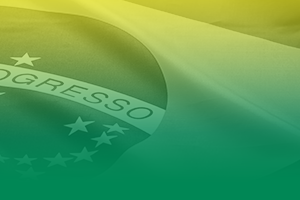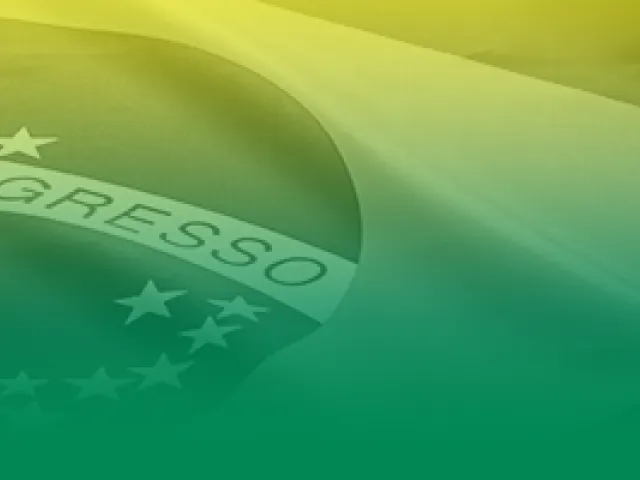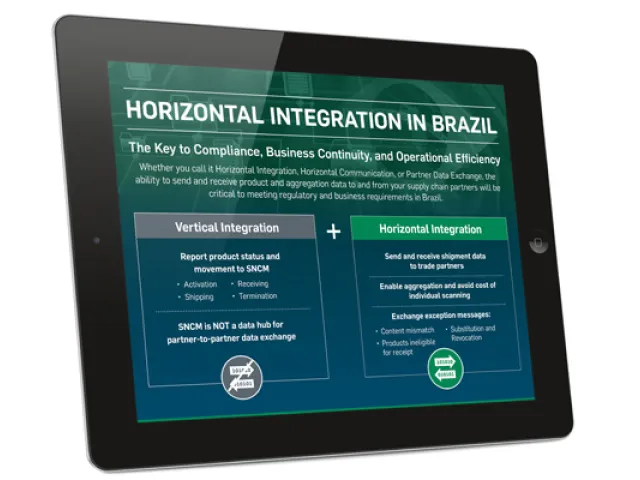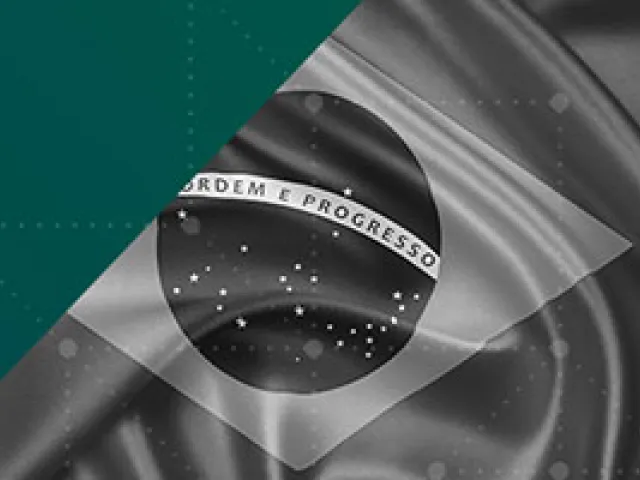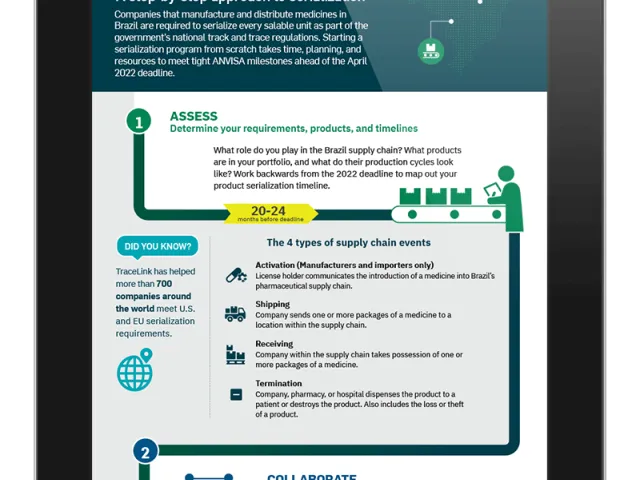Table of contents
Key Takeaways from the September 2021 Brazil Special Interest Group sessions:
- Approved Normative Instruction officially published on the government website in the August 23 edition of its official gazette.
- Brazil pharmaceutical industry association Sindusfarma and other industry organizations are asking ANVISA for written clarification of several provisions of the Normative Instruction.
- TraceLink local Brazil solution partner, SPI, concluded its 4-part workshop series on planning and implementing a serialization project.
- The September 23 session included a discussion to clarify the differences between horizontal integration with trade partners and 3PL integration.
- At the request of SIG members planning to use a third-party logistics provider (3PL) as a proxy for reporting to Brazil’s traceability system, Tracelink has developed a readiness assessment.
Official publication confirms deadline, spurs industry questions
The August 23 publication of the Normative Instruction on the official government website, confirms the April 28, 2022 compliance deadline for manufacturers, importers, distributors, and dispensers. With the publication of the Normative Instruction, the industry is now able to ask specific questions and seek clarification of its provisions. Brazil's largest pharmaceutical industry association, Sindusfarma, has joined other industry organizations and solution providers such as TraceLink in requisition clarification on multiple points, including:
- Defining the “starting point” for imports into Brazil, and whether packages can enter Brazil without the IUM (unique product identifier)
- Distinguishing the terms “comercializado” and “fabricado”
- Permissibility in placing serialized packs into circulation before the April 28, 2022 deadline
- Layout modifications that may require labelling change notifications
- The “starting point” for traceability reporting to the SNCM, assumed to be for sale-ready stock that has been serialized
In the September 23 session of TraceLink’s Brazil Special Interest Group, TraceLink Senior Director of Industry Marketing, Allan Bowyer, reviewed the five sections of the ANVISA website where companies can access foundational documentation for serialization and reporting to the Sistema Nacional de Controle de Medicamentos (SNCM):
- Recursos para desenvolvedores (Developer Resources)
- Webservices files and schemas
- Documentação Técnica (Technical Documentation)
- SNCM Guide v1.0 (October 7, 2020)
- SNCM Standards & Interfaces Manual v1.0 (Oct 15, 2020)
- Planos de Implementação (Implementation Plans). This is now called the “Serialization Plan” in the Normative Instruction.
- Suporte Técnico – suspenso (Technical support – suspended)
- Legislação (Legislation)
- The approved version of the Normative Instruction
- Serialization requirements (including aggregation) described in RDC 157/2017 and its amendments in RDC 319/2019
Compliance workshops for Brazil affiliates
In August and September, Tracelink partner, SPI Integração de Sistemas Ltda, conducted a series of “Checklist Taskforce” workshops—conducted in Portuguese—to help Brazil affiliates understand and prepare for SNCM serialization and reporting requirements:
- Closing the Loop: What do you put on your vertical integration checklist?
- Managing the Risk: What do you put on your risk management checklist?
- Extending the Collaboration: What do you put on your horizontal integration checklist?
- Planning the Project: What do you put on your project planning checklist?
Horizontal integration and 3PL integration. What is the difference?
TraceLink’s Brazil Director, Luca Gabrielli, responded to member questions regarding the difference between horizontal integration—data exchange between trading partners—and integration with a third-party logistics provider (3PL).
Because a 3PL is acting as a reporting proxy using the manufacturer’s tax ID number (CNPJ), there needs to be a direct integration between the 3PL’s Level 4 serialization system and TraceLink’s serialization solutions. This more complex integration using TraceLink APIs is required to meet security and business process requirements, compared with the more straightforward integration with downstream trade partners—wholesalers and dispensers—that only requires access to the TraceLink Network to upload and download aggregated product information to ensure that government reporting is aligned at every point in the product’s journey.
Luca Gabrielli also pointed out that 3PL integration is not dependent on the evolving GS1 data standard and that companies can begin 3PL integration immediately.
TraceLink’s Discovery Questionnaire for assessing 3PL readiness
In the August 26 Brazil Community session, TraceLink project manager Greg Firestone previewed an assessment for customers to use to ensure that their 3PL has the capabilities and infrastructure to keep the delegating company compliant. The September 9 session provided more detail on 5 key areas of the survey:
- Data Management
- Validation
- Proxy Reporting Capabilities
- Horizontal Data Exchange
- Disaster Recovery/Business Continuity
A related discussion was focused on considerations for determining whether to use the native SNCM reporting data format or the industry-standard EPCIS data format for communicating serialization events to partners.
Stay informed with TraceLink’s Brazil Special Interest Group and Product Innovation Forum
TraceLink's Brazil Special Interest Group will soon convert to a Product Innovation Forum where TraceLink customers can discuss business requirements and get updates on TraceLink’s Brazil Compliance and Serialized Traceability solutions for horizontal data exchange. TraceLink’s Brazil Community meets every two weeks on Thursdays. Join the TraceLink Community.



